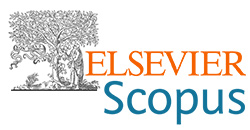Pregled gljivične korozije metala
DOI:
https://doi.org/10.5937/zasmat2104333OApstrakt
Rast gljiva na površini metala ima veliki uticaj na njihov strukturni integritet i kvar. Njihov rast na metalnim površinama određen je izlučenim metabolitima koji im omogućavaju da se prilagode novim uslovima životne sredine i ishrane. Iako su informacije o sposobnosti gljiva da se prilagode metalnim površinama oskudne većina gljiva koje rastu na metalnim površinama menjaju sastav metala koji ih uključuju u proces unkcionalnog rasta i metabolizma. Promene u sastavu metala i promene boje neki su od dokaza koji potvrđuju da je gljiva prodrla u metalne površine i koristi je za zadovoljavanje svojih nutritivnih potreba sa rezultujućom korozijom. U ovom radu pokušali smo objasniti različite mehanizme korozije pod uticajem gljivica iz različitih perspektiva od uloge biofilmova, stvaranja korozivnih medija putem procesa metabolizma gljiva do elektrohemijskih procesa nastalih rastom gljivica na metalnim površinama. Konačno nijedan jedinstven mehanizam ne može u potpunosti objasniti sve oblike korozije izazvane gljivicama jer je svaki mehanizam jedinstven i primjenjuje se na pojedine gljive njihove metaboličke nusproizvode ili obrazac rasta.Ključne reči:
gljivična korozija, metali, mehanizam korozije, životna sredina, korozijaReference
Abdel-Gaber, A.M., Abd-El-nabey, B.A., Sidahmed, I.M., el-Zayady A.M., Saadawy, M. (2006) Inhibitive action of some plant extracts on the corrosion of steel in acidic media.Corrosion Science, 48(9), 2765-2779
https://doi.org/10.1016/j.corsci.2005.09.017
Acuña, N., Ortega-Morales, B.O., Valadez-González, A. (2006) Biofilm colonization dynamics and its influence on the corrosion resistance of austenitic UNS S31603 stainless steel exposed to Gulf of Mexico seawater.Marine Biotechnology, 8(1), 62-70
https://doi.org/10.1007/s10126-005-5145-7
Albuquerque, C.C.D., Camara, T.R., Mariano, R.de L.R., Willadino, L., Marcelino, J.C., Ulisses, C. (2006) Antimicrobial action of the essential oil of Lippia gracilis Schauer.Brazilian Archives of Biology and Technology, 49(4), 527-562
https://doi.org/10.1590/S1516-89132006000500001
Amitha-Rani, B.E., Bharathi-Bai, J.B. (2012) Green inhibitors for corrosion protection of metals and alloys: An overview.International Journal of Corrosion, 10, 70-80
https://doi.org/10.1155/2012/380217
Beech, B. (2003) Sulfate-reducing bacteria in biofilms on metallic materials and corrosion.Microbiology Today, 30, 115-117
Beech, I.B., Sunner, J. (2004) Biocorrosion: Towards understanding interactions between biofilms and metals.Current Opinion in Biotechnology, 15(3), 181-186
https://doi.org/10.1016/j.copbio.2004.05.001
Burgstaller, W., Schinner, F. (1993) Leaching of metals with fungi.Journal of Biotechnology, 27(2), 91-116
https://doi.org/10.1016/0168-1656(93)90101-R
Cetin, D., Aksu, M.L. (2009) Corrosion behavior of low-alloy steel in the presence of Desulfotomaculum sp.Corrosion Science, 51(8), 1584-1588
https://doi.org/10.1016/j.corsci.2009.04.001
Costa, R.M.P.B., Vaz, A.F.M., Oliva, M.L.V., Coelho, L.C.B.B., Correia, M.T.S., Carneiro-Da-cunha, M.G. (2010) A new mistletoe Phthirusa pyrifolia leaf lectin with antimicrobial properties.Process Biochemistry, 45(4), 526-533
https://doi.org/10.1016/j.procbio.2009.11.013
Dickinson, W.H., Lewandoski, Z. (1998) Electrochemical concepts and techniques in the study of stainless-steel ennoblement.Biodegradation, 9, 11-21
https://doi.org/10.1023/A:1008223930984
El-Etre, A.Y., Abdallah, M., el-Tantawy Z.E. (2005) Corrosion inhibition of some metals using lawsonia extract.Corrosion Science, 47(2), 385-395
https://doi.org/10.1016/j.corsci.2004.06.006
Gadd, G.M. (2010) Metals, minerals and microbes: Geomicrobiology and bioremediation.Microbiology, 156(3), 609-643
https://doi.org/10.1099/mic.0.037143-0
Gu, J.D., Mitechell, R. (2000) Biodeterioration. in: Dworkin M., Falkow S., Rosenberg E., Scheifer K.H., Stackebrandt E. [ed.] Prokaryotes: An Evolving Electronic Resourse for the Microbiological Community, New York: Springer-Verlag
Gunasekaran, G., Chauhan, L.R. (2004) Eco friendly inhibitor for corrosion inhibition of mild steel in phosphoric acid medium.Electrochimica Acta, 49(25), 4387-4395
https://doi.org/10.1016/j.electacta.2004.04.030
Hossain, M.A., Das, C.R. (2005) Kinetic and thermodynamic studies of microbial corrosion of mild steel specimen in marine environment.Journal of Indian Chemical Society, 82, 376-378
Imo, E.O., Orji, J.C., Nweke, C.O. (2020) Impact and corrosion behavior of mild steel in the presence of Penicillium chrysogenum.International Journal of Coal, Geology and Mining Research, 2(1), 34-44
Imo, E.O., Orji, J.C., Nweke, C.O. (2018) Influence of Aspergillus fumigatus on corrosion behaviour of mild steel and aluminium.International Journal of Applied Microbiology and Biotechnology Research, 6, 61-69
Imo, E.O., Orji, J.C., Nweke, C.O. (2019) Fungal influenced corrosion of aluminium in the presence of Acremonium kiliense.International Journal of Applied Microbiology and Biotechnology Research, 7, 1-6
Juzeliūnas, E., Ramanauskas, R., Lugauskas, A., Leinartas, K., Samulevičienė, M., Sudavičius, A., Juškėnas, R. (2007) Microbially influenced corrosion of zinc and aluminium: Two-year subjection to influence of Aspergillus Niger.Corrosion Science, 49(11), 4098-4112
https://doi.org/10.1016/j.corsci.2007.05.004
Lambert, R.J.W., Skandamis, P.N., Coote, P.J., Nychas, G.J.E. (2001) A study of minimum inhibitory concentration and mode of action of oregano essential oil.Journal of Applied Microbiology, 91(3), 453-462
https://doi.org/10.1046/j.1365-2672.2001.01428.x
Lewandowski, Z., Beyenal, H. (2008) Mechanisms of microbially influenced corrosion.Springer Series on Biofilms, 8, 1-2
https://doi.org/10.1007/7142_2008_8
Lewandowski, Z., Beyenal, H. (2007) Fundamentals of biofilm research. Boca Raton, FL: CRC Press
https://doi.org/10.1201/b15996
Li, Y., Zhao, P., Liang, Q., Hou, B. (2005) Berberine as a natural source inhibitor for mild steel in 1M H2SO4.Applied Surface Science, 252(5), 1245-1253
https://doi.org/10.1016/j.apsusc.2005.02.094
Little, B., Ray, R. (2002) A perspective on corrosion inhibition by biofilms.Corrosion, 58(5), 424-428
https://doi.org/10.5006/1.3277632
Little, B., Staehle, R., Davis, R. (2001) Fungal influenced corrosion of post-tensioned cables.International Biodeterioration & Biodegradation, 47(2), 71-77
https://doi.org/10.1016/S0964-8305(01)00039-7
Little, B.J., Lee, J.S. (2007) Microbiologically influenced corrosion. Hoboken, NJ: John Wiley and sons
https://doi.org/10.1002/047011245X
Lugauskas, A., Igoris, P., Rimantas, R., Asta, G., Aušra, S., Vidas, P. (2009) The influence of micromycetes on the corrosion behaviour of metals (Cu, Zn) in environments polluted with organic substances.Chemija, 20(3), 141-153
Lugauskas, A., Leinartas, K., Grigucevičienė, A., Selskienė, A., Binkauskienė, E. (2008) Possibility of micromycetes detected in dust to grow on metals (Al, Fe, Cu, Zn) and on polyaniline-modified Ni.Ekologija, 54(3), 149-157
https://doi.org/10.2478/V10055-008-0023-z
Merritt, K., Brown, S.A. (1988) Effect of proteins and pH on fretting corrosion and metal ion release.Journal of Biomedical Materials Research, 22(2), 111-120
https://doi.org/10.1002/jbm.820220204
Rohwerder, T., Gehrke, T., Kinzler, K.S. (2003) Bioleaching review part A: Progress in bioleaching: Fundamentals and mechanisms of bacterial metal sulfide oxidation.Applied Microbiology Biotechnology, 63, 239-248
https://doi.org/10.1007/s00253-003-1448-7
Rosales, B.M. (1985) Corrosion measurement for determining the quality of maintenance in jet fuel storage. in: Dexter S.C., Videla H.A. [ed.] Proceeding of the Argentine-USA Workshop on Biodeterioration, Sao Paulo, Brazil, Aquatic Quimica, 135-143
Singh, A., Ebenso, E.E., Quraishi, M.A. (2012) Corrosion inhibition of carbon steel in HCl solution by some plant extracts.International Journal of Corrosion, Article ID 897430
https://doi.org/10.1155/2012/897430
Uhlig, H.H. (2011) Corrosion hand book. John Wiley and Sons Inc, Third Edition
Videla, H.A., Herrera, L.K. (2004) Biocorrosion. in: Vazquez-Duhalt R., Quintero-Ramirez R. [ed.] Petroleum biotechnology: Developments and perspectives, Amsterdam: Elsevier, p.193-218
https://doi.org/10.1016/S0167-2991(04)80148-4
Videla, H.A. (2003) Biocorrosion and biofouling of metals and alloys of industrial usage: Present state of art at the beginning of new millennium.Revista de Metalurgia, 1, 256-264
https://doi.org/10.3989/revmetalm.2003.v39.iExtra.1128
Videla, H.A., Herrera, L.K. (2005) Microbiologically influenced corrosion: Looking to the future.International Microbiology, 8(3), 169-180
Videla, H.A. (2001) Microbially induced corrosion: An updated overview.International Biodeterioration & Biodegradation, 48(1-4), 176-201
https://doi.org/10.1016/S0964-8305(01)00081-6
Videla, H.A. (2002) Prevention and control of biocorrosion.International Biode-terioration and Biodegradation, 49, 259-270
https://doi.org/10.1016/S0964-8305(02)00053-7
Xiaohui, W., Ling, W. (2006) Measures and test techniques for fungus resistance to aircraft materials and equipment. in: 25 th International Congress of the Aeronautical Sciences, ICAS 2006
Zhang, F., Pan, J., Claesson, P.M. (2011) Electrochemical and AFM studies of mussel adhesive protein (Mefp-1) as corrosion inhibitor for carbon steel.Electrochimica Acta, 56(3), 1636-1645
##submission.downloads##
Objavljeno
Broj časopisa
Rubrika
Licenca
Sva prava zadržana (c) 2021 CC BY 4.0 by Authors

Ovaj rad je pod Creative Commons Autorstvo 4.0 Internacionalna licenca.






